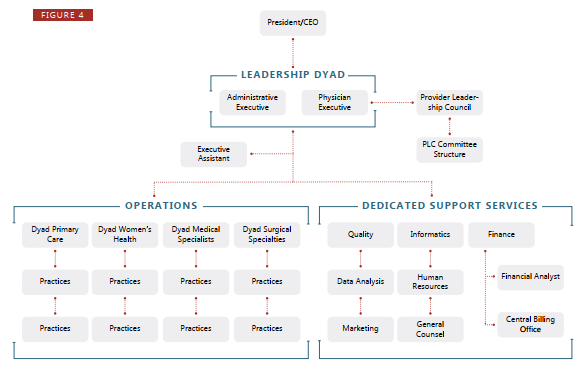Provider leadership should be formally incorporated within the organization’s management infrastructure by specifying formally designated physician leadership positions and establishing a physician leadership council to provide direct input into the organization’s strategic planning and operational problem-solving and decision-making processes. Doing so will lead to more efficient and effective organizational function, enhanced positioning for value-based care delivery, and accelerated progress toward becoming a high performing network. Directly involving provider leadership also increases engagement, enhances alignment, improves outcomes, promotes recruitment and retention success, and mitigates burnout risk.
HSG works with health system to enhance the two core clinical leadership structures that involve Physicians and Advanced Practice Professionals in the management and leadership of an employed network:

- Dyad Leadership Structures
- Development and Implementation of Dyad Structures
- Coaching/Mentoring for Dyad Leaders
- Provider Leadership Councils
- Organization and Implementation of Provider Leadership Councils
- Facilitation of Meeting Structures
- Coaching/Mentoring for Leadership Members
- Organization and Implementation of Committee Structures
Related Resources
-
Globe Newswire Press Release – HSG Physician Network Integrity Analytic Tool Boosts Patient Share of Care
HSG Physician Network Integrity Analytic Tool reveals opportunities & proves effective as academic health system boosts share of patient care.
-
Eleven Questions for Creating a Healthcare Service Line Vision
Creating a comprehensive healthcare service line vision should address eleven key areas. Proper visions will guide service line priorities.
-
Management of Healthcare Organizations: A CEO’s Guide to Developing Physician Capabilities for the Future
This CEO’s guide will help you understand why building a great employed physician group is critical to management of healthcare organizations.



